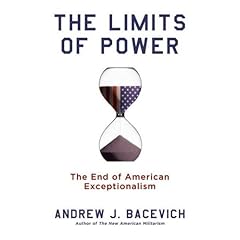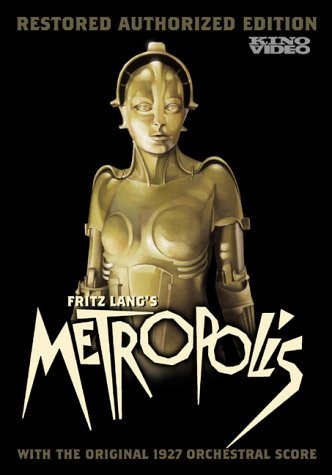Online Storytelling & Cause Marketing: An Interview with Jonah Sachs of Free Range Studios
Big Vision and
Have Fun. Do GoodHost: Britt Bravo
Jonah Sachs: We were founded as Free Range Graphics, but we are actually called Free Range Studios now. Free Range Studios is an advertising and marketing firm that specializes in progressive non-profit and socially responsible businesses, but we are best known for our online storytelling. We do a lot of print design; we started in website design; what we do that people see the most is online storytelling.
As we've grown up with it, and we've been doing it since about 1998, it has suddenly become the sort of thing that everybody is talking about now, is how do you do online advertising content that is entertaining and engaging. We've been doing that in the non-profit and social activism space for this whole time. Up until now, we've really found that it is an advantage that cause marketing has over traditional marketing, just in that people like to pass along educational or cause-related messages more than they do traditional advertisements. With so many new people entering the space, hopefully, we'll be able to keep that edge. I know that corporations are really desperate to get into it as well.
We have offices in Washington DC and in Berkeley, California, and there are about 25 of us now. We work for clients across the board from non-profits like the ACLU and Greenpeace to more political causes. We did John Kerry for President, before that, Howard Dean for America. We also work with some socially responsible businesses like Green Mountain Coffee Roasters; we are working with Annie's Organic right now, and so a broad mix of people who are trying to make the world a better place.
Britt: How did you get started?
Jonah: I started Free Range with a friend of mine, Louis Fox, when we were 22 years old. We've been friends since we were seven, so we already had a very long collaborative history. Louis is a traditional artist and I was in the journalism field. We wanted to combine our talents and felt graphic design would be a good place to start. We had been working on films as kids for a long time; we liked the kind of mass communication. We also were both committed to social activism and felt shut out of the advertising world because we felt it was a really interesting medium, but we also felt that it wouldn't be right to spread messages that we did not believe in.
When we started in Washington in 1998, we had an idea that we would just give it a shot. We put up a website; we did not even have any practical experience in the field, but we put up a website and said that we only serve progressive non-profits. We hadn't started political or socially responsible businesses at that point. We just sort of put it out there, and it's a very small community and a very loyal community, especially in Washington, of progressive people. People really responded well to that, and that has been our niche ever since. We've stayed true to that even though some opportunities have come up to leave that, but that is what really gets us excited.
Britt: One of your most famous campaigns is "The Meatrix." Can you talk a little bit about its evolution?
Jonah: Well, I forget now how when we did it. 2002? When we first got together to do The Meatrix, we actually had this idea to do a Gratitude Grant to our clients as a way of just saying thank you and also getting more known in the field, so we put out this call for grant applications and said, we'll give away a free flash movie. We also did it because we wanted creative control over our project. We hadn't really had full creative control over a project yet, so we figured if we gave one away to a worthy cause, we could really get our creative thinking completely unfiltered through it.
We got about 75 applications and one of them came from Global Resource Action Center for the Environment, which is called GRACE. They wanted to do something about factory farming, and that has really been an issue that has been close to Louis' and my heart for a long time. It really combines so many different problems in society, from environmental concerns, labor concerns, animal rights concerns, health concerns and we just saw it as this great nexus of all these different things that if we could solve this problem -- which we probably never could completely solve it, it's so endemic to our society -- but if we can address it, then we are addressing a lot of different issues.
We said, "All right, let's take on this issue," both, because it's really important from an intellectual, social point of view, but also it's a great challenge creatively because it's such an unappealing, difficult message to get out there and groups in the past have really struggled to get people to look at this issue because it's unappealing, it's gross, it's ugly and so we said, "Let's take on this greater challenge and see if we can come up with something that talks about the issue in a different way."
We spent about three months really digging through tons of different ideas that we had and kept running into the same roadblock, that it was just kind of a downer. You were not giving anybody anything by telling him or her their food came from a terrible place; you were just kind of bumming them out. Maybe the hardcore people who are into this issue would be interested, but no one else would.
One day, we started talking about how important it was for people to realize that factory farming was so bad, that we had to create this fake world in which food comes from a happy farm. You were looking at food labels and how it has nothing to do with the reality; it's so bad we cannot even really look at it, and so we started saying, "Oh, you know that's a little bit like The Matrix. That got us thinking about that scene where Keanu Reeves is plucked out of that pod when he was first woken up, and I thought, that is like a factory farm.
One thing that we've gotten to learn over the years, is that when you start trying to build metaphorical bridges between an issue and a piece of pop culture, which is the best way to move anything anyway, if the bridges start getting built in a "meant to be" way, there is no reason that one bridge should also lead to another because maybe it's like The Matrix in this way, but why would it be like The Matrix in five other ways, too? When they start falling into place like that, and even down to the name, The Meatrix, was actually the last thing we came up with.
I remember sitting in a concert, we had everything done except the name. I don't know why, but we just couldn't think of the right name for it. When the name came, it was like it was pre-made and meant to be that way. It just felt right that there were so many metaphorical connections between the two and I think that people saw that.
We get instant feedback about how successful our stuff is because the web provides numbers, hard numbers about who sees what you do. We often know when we hit something just right; it will resonate with other people. We knew when we put The Meatrix out, in a lot of ways that we had hit something that resonated and was just meant to be. I think that we really succeeded also in making it kinds of consumable, fun and funny without trivializing the issue.
We've been trying since then to learn all those lessons and continue to make more stuff like that. Sometimes it's very successful, and yet there is no real formula for it. Each issue need its own creative thinking, and a lot of times we aren't able to come up with something like The Meatrix, but sometimes we are, and that is what is really fun.
To Read the Rest of the InterviewListen to the Interview














































